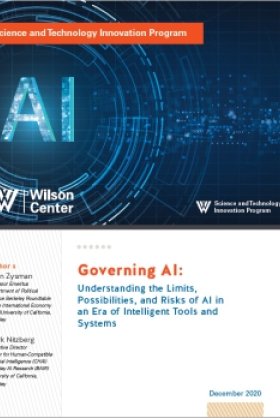Governing AI: Understanding the Limits, Possibilities, and Risks of AI in an Era of Intelligent Tools and Systems





In debates about artificial intelligence (AI), imaginations often run wild. Policy-makers, opinion leaders, and the public tend to believe that AI is already an immensely powerful universal technology, limitless in its possibilities. However, while machine learning (ML), the principal computer science tool underlying today’s AI breakthroughs, is indeed powerful, ML is fundamentally a form of context-dependent statistical inference and as such has its limits. Specifically, because ML relies on correlations between inputs and outputs or emergent clustering in training data, today’s AI systems can only be applied in well- specified problem domains, still lacking the context sensitivity of a typical toddler or house-pet. Consequently, instead of constructing policies to govern artificial
general intelligence (AGI), decision- makers should focus on the distinctive and powerful problems posed by narrow AI, including misconceived benefits and the distribution of benefits, autonomous weapons, and bias in algorithms. AI governance, at least for now, is about managing those who create and deploy AI systems, and supporting the safe and beneficial application of AI to narrow, well-defined problem domains. Specific implications of our discussion are as follows:


The Science and Technology Innovation Program (STIP) serves as the bridge between technologists, policymakers, industry, and global stakeholders. Read more


Less and less of life, war and business takes place offline. More and more, policy is transacted in a space poorly understood by traditional legal and political authorities. The Digital Futures Project is a map to constraints and opportunities generated by the innovations around the corner - a resource for policymakers navigating a world they didn’t build. Read more


